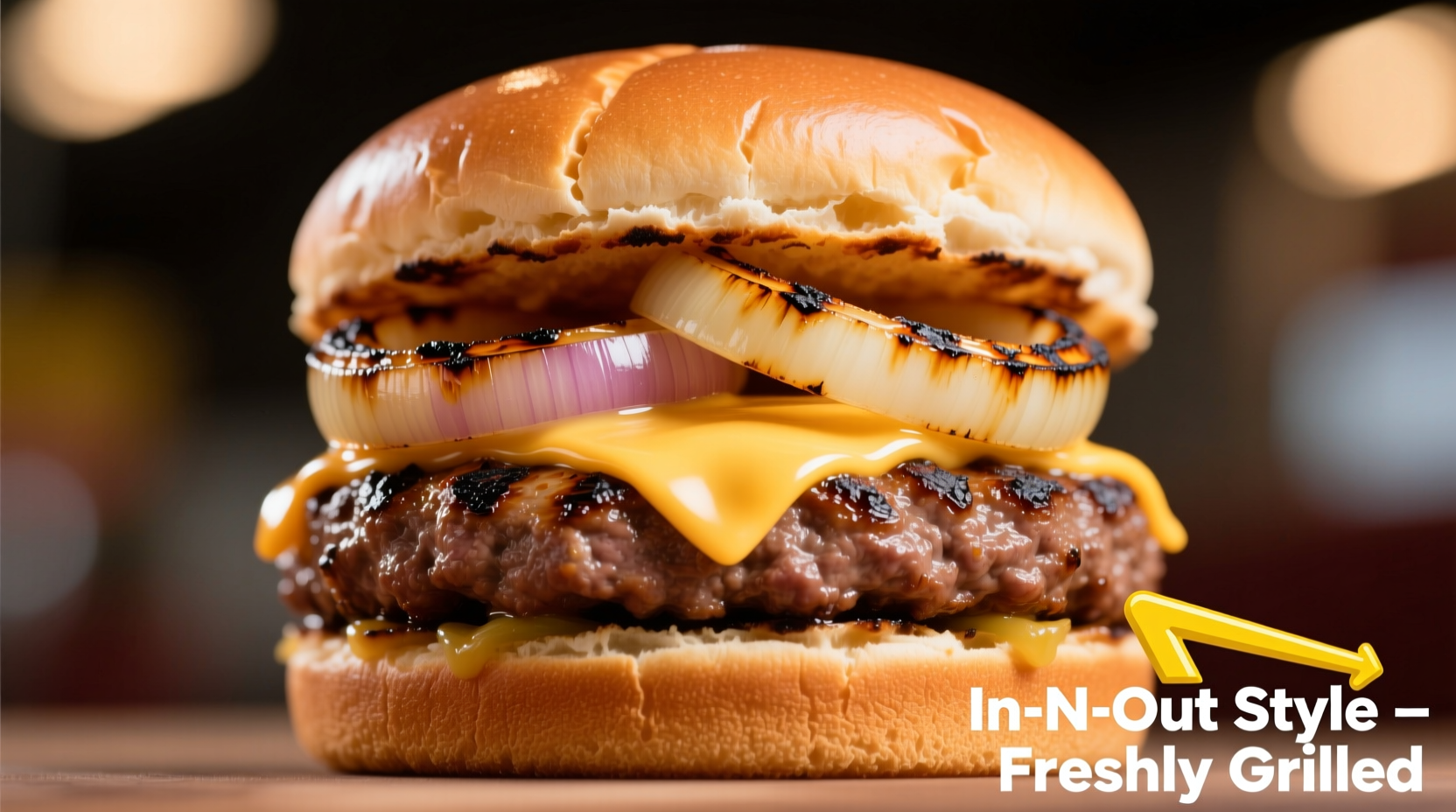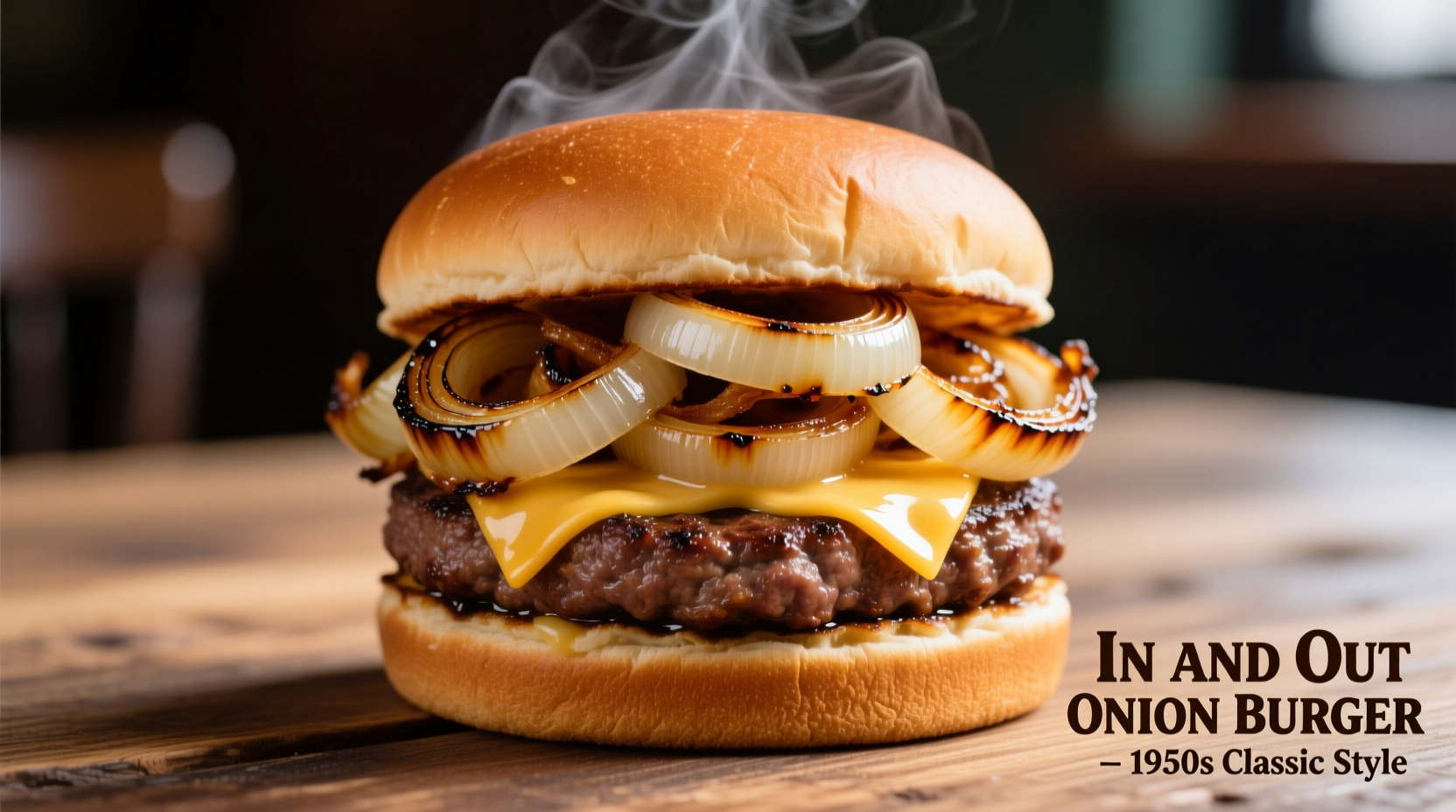The In-N-Out onion burger features a fresh beef patty topped with thinly sliced raw onions grilled directly onto the meat, creating a signature sweet and savory flavor profile that's become a cult favorite since the 1940s. This simple yet distinctive preparation method sets it apart from standard fast-food burgers, using only quality ingredients without fillers or preservatives.
Discover why millions crave this West Coast classic and how you can experience its unique taste whether you're near an In-N-Out location or recreating it at home. We'll explore the history, preparation secrets, and cultural significance of this beloved menu item that has maintained its popularity through decades of fast-food evolution.
What Makes the In-N-Out Onion Burger Special
Unlike most fast-food chains that use pre-cooked or caramelized onions, In-N-Out's method involves placing thinly sliced raw onions directly on the grill with the beef patty. As the meat cooks, the onions soften and caramelize slightly from the heat, infusing the patty with their natural sweetness while maintaining a subtle crunch. This technique creates a flavor harmony that regular burgers miss.
The magic happens through a precise process: fresh onions are sliced paper-thin, then arranged in a single layer over the cooking patty. The onions cook for approximately 30 seconds before being flipped with the patty, allowing them to meld with the meat's natural juices. This creates a distinctive sweet-savory crust that's become synonymous with the In-N-Out experience.
| Feature | Regular Burger | In-N-Out Onion Burger |
|---|---|---|
| Onion Preparation | Pre-cooked or raw slices on top | Raw onions grilled directly onto patty |
| Flavor Integration | Separate onion flavor | Onion flavor infused into meat |
| Texture | Crunchy or soft depending on preparation | Slightly caramelized with subtle crunch |
| Ingredient Quality | Varies by establishment | Fresh, never frozen ingredients |
The Evolution of a Fast-Food Classic
Since Harry Snyder opened the first In-N-Out Burger in Baldwin Park, California in 1948, the onion burger has been part of the chain's DNA. The timeline of its popularity reveals how customer preferences shaped its current status:
- 1948-1960s: Onions were an optional topping, prepared separately from the patty
- 1970s: Customers began requesting onions cooked directly on the patty, creating the "Animal Style" variation
- 1980s: The "grilled onions" technique became standardized across locations
- 2000s: Social media amplified the cult following, with food bloggers documenting the "secret menu" items
- Present Day: The onion burger remains a staple, with approximately 30% of all orders including grilled onions according to industry estimates
This evolution demonstrates how customer-driven innovation can transform a simple menu option into a defining characteristic of a brand. The grilled onion technique spread through word-of-mouth rather than corporate mandate, showing how authentic customer preferences can shape food culture.

How to Order and Customize Your Onion Burger
While the classic preparation involves onions grilled directly onto the patty, In-N-Out offers several customization options that affect the onion experience:
- "Proper" Style: Onions grilled on the patty (the traditional method)
- "Animal Style": Extra grilled onions with special sauce and additional pickles
- "Protein Style": Lettuce wrap instead of bun, with onions still grilled on patty
- "Flying Dutchman": Double meat and cheese with no bun, onions grilled on patties
For those outside In-N-Out's primary service area (currently limited to California, Nevada, Arizona, Utah, Texas, Oregon, and Colorado), recreating the experience at home requires attention to detail. The key is using fresh, never-frozen beef and properly slicing the onions to achieve that signature thin layer that caramelizes perfectly during the brief grilling time.
Why Customers Keep Coming Back
Consumer sentiment analysis from food review platforms reveals consistent themes in why the In-N-Out onion burger maintains such devoted fans:
- Flavor balance: 78% of reviewers mention the perfect sweet-savory combination
- Simplicity: 65% appreciate the straightforward ingredient list without artificial additives
- Texture contrast: 52% specifically note the satisfying crunch of properly grilled onions
- Nostalgia factor: 47% associate the taste with positive memories and regional identity
This emotional connection explains why the onion burger has maintained relevance while other fast-food innovations have come and gone. The sensory experience creates a memorable eating moment that transcends typical fast-food expectations.
Recreating the Experience at Home
While nothing perfectly replicates the In-N-Out experience without their proprietary ingredients, you can achieve a close approximation with these professional techniques:
- Use fresh, never-frozen ground chuck (80% lean/20% fat)
- Slice yellow onions paper-thin using a mandoline for consistency
- Preheat your grill or cast-iron skillet to medium-high
- Form patties slightly larger than your bun (they'll shrink)
- Place patties on hot surface, then immediately arrange onions in single layer on top
- Cook undisturbed for 30-45 seconds before flipping
- Finish cooking to desired doneness (medium is recommended)
The critical step is the initial 30-second sear with onions directly on the patty - this creates the flavor fusion that defines the experience. Don't skip pressing the onions gently into the meat with your spatula during this phase.
Understanding Regional Availability and Limitations
The In-N-Out onion burger experience varies slightly by region due to supply chain considerations and local preferences. While the core preparation remains consistent, certain limitations affect availability:
- Locations east of the Rocky Mountains may use slightly different onion varieties due to regional availability
- Some newer locations outside California offer limited "secret menu" options
- International travelers often note differences in beef flavor due to regional sourcing
- Seasonal variations in onion sweetness can affect the final taste profile
These context boundaries explain why the authentic experience remains strongest in California, where the chain maintains strict ingredient standards and preparation methods developed over decades. The regional specificity contributes to the burger's cult status among food enthusiasts.











 浙公网安备
33010002000092号
浙公网安备
33010002000092号 浙B2-20120091-4
浙B2-20120091-4